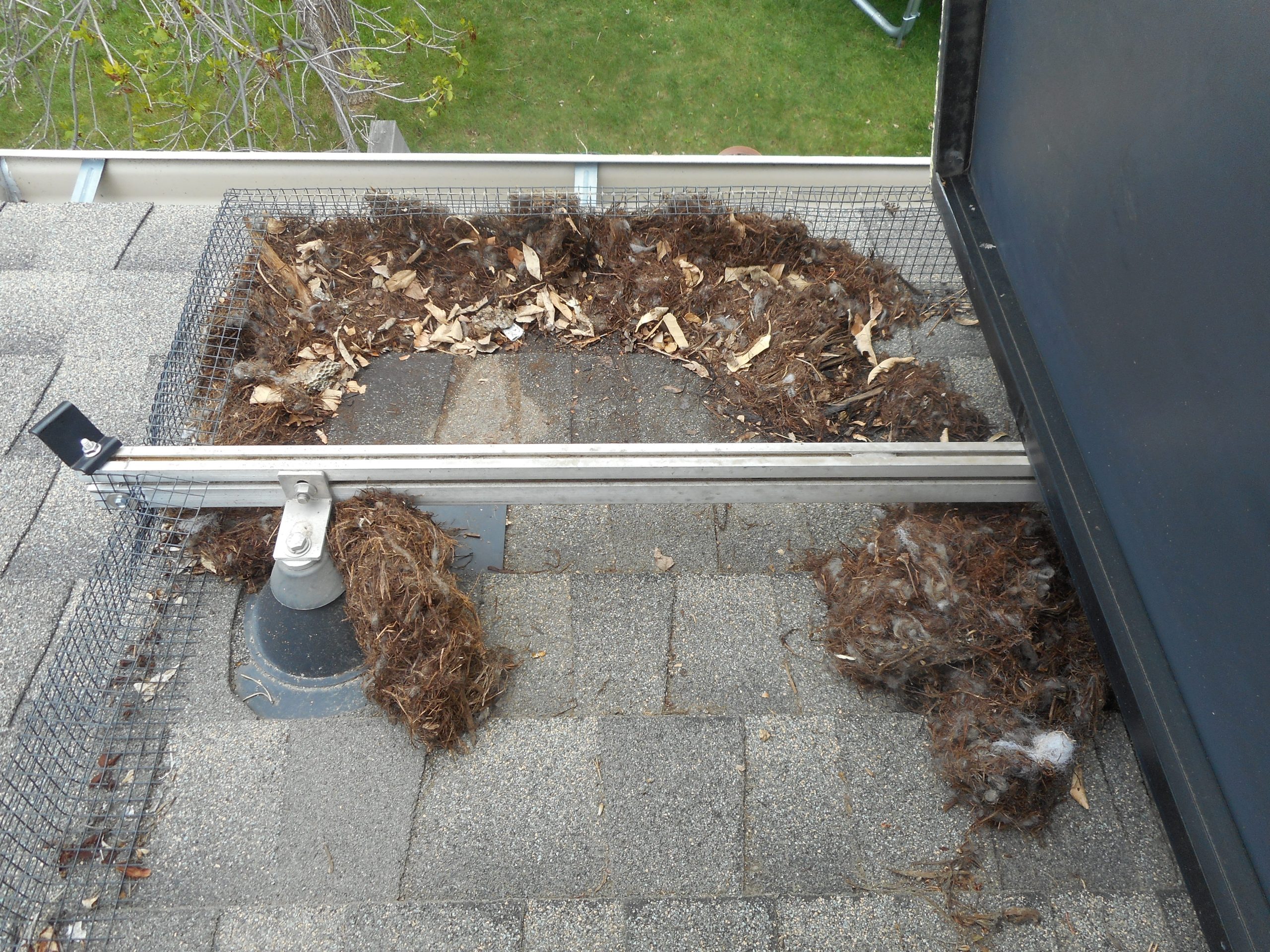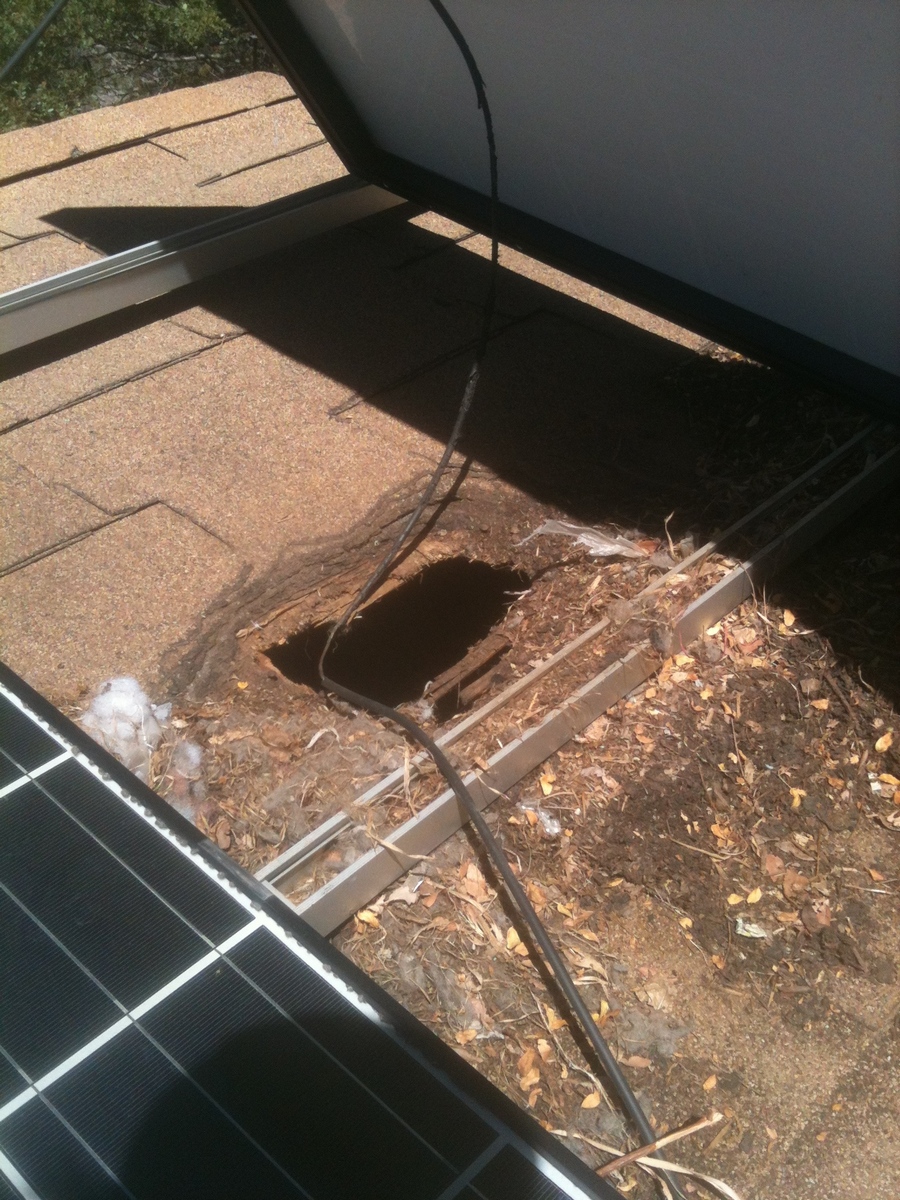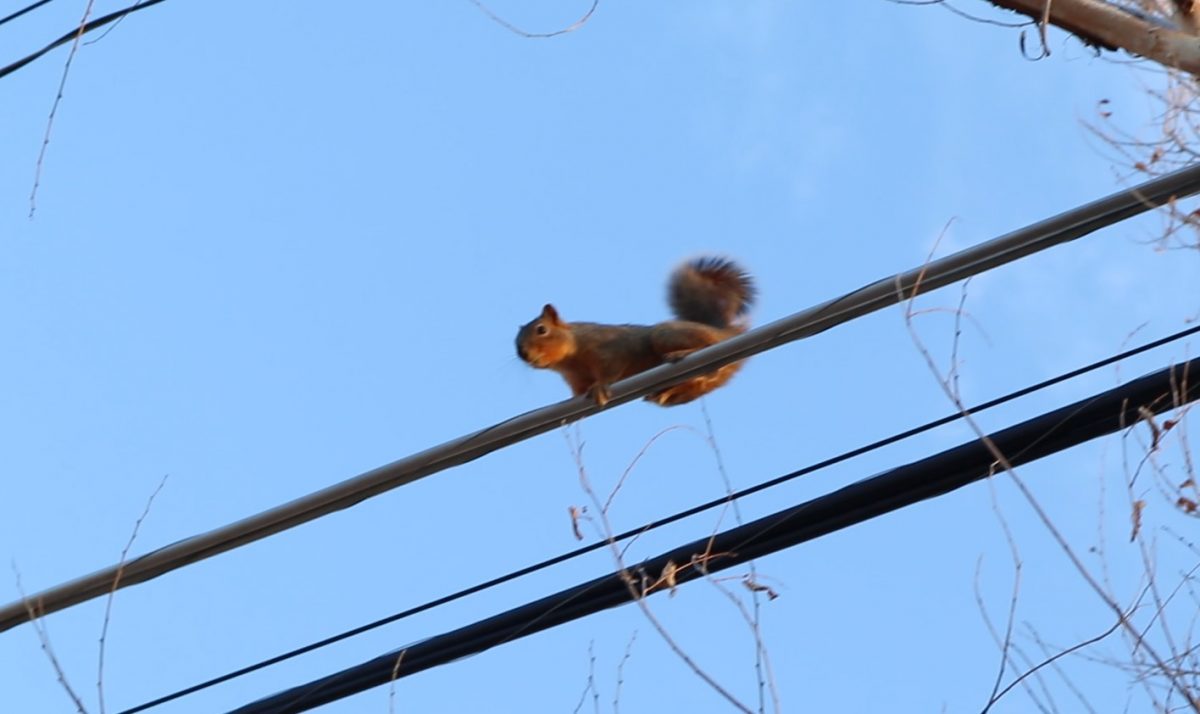Whether you’re a solar homeowner, installer or investor, you’re likely aware that pests – namely squirrels and birds – can mess with solar systems. Search the internet, and you’ll find a wide range of conflicting anecdotes and industry practices:
- Horror stories from homeowners who’ve dealt with roof leaks and expensive repairs due to squirrels
- Homeowners who’ve had no animal issues after decades of PV system ownership
- Solar installers who include a protective animal barrier on every PV system they sell
- Solar installers who sell PV systems without mentioning animal guard (or charge an additional fee to install it)
With no clear consensus on the utility of animal guard, the decision of whether to invest in it can be a tough call. Rather than throw more anecdotes at you, we’ve decided to approach this question the same way we would any business investment – using math and any hard data we can get our hands on!
The Equation
We’ll start with a simple premise: animal guard is worth installing if the money it saves (by avoiding nest removals, repairs, and lost production) exceeds the cost of installation.
Cost of animal damage > Animal guard install cost
In this article, we focus exclusively on the left side of the equation – the cost you can expect to incur if you don’t install animal guard. To estimate the cost of installing animal guard, gather quotes from local contractors or estimate the cost of doing it yourself using the resources on our website.
Takeaways
Short on time? Here are ballpark numbers to guide your animal guard decision:
- We estimate the typical US residential PV system owner will be liable for $855 (net present value) in animal-related costs over the lifetime of the PV system should they choose not to install animal guard. These costs include nest removal, inspection, repair of animal damage, and PV production losses due to animal damage.
- Our simulations show a standard deviation of $1,200 in liability, with the best case resulting in zero costs and the worst case over $9,000.
- We expect about 60% of PV systems to experience at least one animal-damage event over a 30-year lifetime, with any such event requiring professional inspection and remediation.
If you’re curious how we came up with those numbers, or would like to tweak our assumptions and run your own simulation– in other words, if you’re a nerd like us– read on!
Animal Damage Scenarios
As we heard earlier, the cost of animal damage can vary widely. Factors affecting it include:
- Geographic location and amount of squirrel/bird activity
- Accessibility of PV system to animals (e.g. overhanging trees, roof height)
- Local contractor rates for inspection and repairs
That said, we can make a reasonable estimate by breaking down the various animal-damage scenarios and estimating their costs and likelihoods. Consider a single year in the life of a PV system. Here are four different ways the year could play out animal-wise:
- No animal activity/damage. There are no costs incurred because no animal decides to venture under the PV array.
- An animal nests under the array and is detected quickly. A service technician is brought to the site to remove the nest. Because nests frequently result in damage to the roof or PV system, the technician must inspect the nest area for damage, which involves temporarily shutting off the PV system and removing several solar panels for access. Because nests restrict airflow under the solar array and increase PV cell temperature, the system power output will have suffered during the presence of the nest – but only for a short time.
- An animal nests, resulting in minor damage to the PV system or roof. See our breakdown of common animal damage. Repairs often include replacing wires whose insulation has been chewed through by rodents, replacing an individual panel whose backsheet has been scratched, and re-roofing portions of the roof where a nesting animal has scratched through the surface.
- An animal nest goes undetected until secondary damage has occurred. Secondary damage includes water damage and mold due to a compromised roof surface, long-term performance degradation of the PV system, and fire and electrocution hazards due to compromised electrical insulation and PV hot spots. All of these would require extensive repairs.
Likelihood of Damage
Having established these four possible outcomes, how likely is each to occur for a PV system without animal guard? We’ve been unable to track down reliable statistics around this, so let’s make some conservative guesses:
| Event | Chance of occurrence (over 1 year) |
|---|---|
| Nesting; no damage | 2% |
| Nesting; minor damage | 1% |
| Nesting; secondary damage | 0.1% |
| No damage | 96.9% |
I.e. we’re estimating that in any given year, there is a 1-in-50 chance (2%) that an animal nests under the array but is removed with no further consequences. These figures will certainly vary by location, but we feel the numbers above represent a normal area with moderate critter activity. If you’re interested in a location where you know the risk to be higher (or lower), you’ll have an opportunity to plug in your own numbers later.
Cost of inspection & repair
Next, let’s estimate the cost of dealing with each of the outcomes listed above. Consider the potential elements of any response:

- Van roll – In contractor-speak, this means having to send a qualified person (e.g. a licensed electrician) and helpers to the job site– which costs money regardless of any work performed. Typical cost: $200
- Panel removal/inspection – If any animal activity (or debris buildup) is detected under the array, nearby solar panels must be lifted to inspect for roof rot and damage to the PV wiring. Typical cost: $200
- Minor roof/PV repairs – Removing nests, replacing chewed wires and compromised roofing, re-commissioning system. Typical cost: $800
- Major repairs – Interior mold remediation, PV module or electronics replacement. Typical cost: $5,000
- Lost production – Reduced PV output and downtime due to hot spots over nests and chewed wire insulation. In a 2020 report based on observing 100,000 PV systems, NREL found that “damage caused by animals may not occur often, but… can have substantial impact on annual production.” This is because damage that reduces PV performance, but does not actually shut the system down, may go undetected for years. We’ll assume lost production equals 25% of expected production during the year in which animal damage occurs. For the average residential rooftop system, that is about (9,000 kWh)*(25%)*($.14/kWh)= Typical cost: $315
How did we arrive at these cost figures?
We surveyed our network of solar installers to determine typical service costs. These costs can be extremely variable based on location, supply and demand. For example, here in Colorado we occasionally have a bad hail storm that causes a jump in service rates and lead times. Here are the ranges we’ve found contractors are charging across the US:
- Van roll – $150-$500
- Hourly service rate – $180
Note these amounts reflect the direct costs (labor and materials) a contractor would incur to perform the work. The amount billed to the customer (homeowner, lessor or warrantor) would also include the contractor’s profit margin and taxes.
There is one additional, difficult-to-quantify cost of any maintenance incident with a PV array: reputational damage to the installer, lessor or system owner (if other than the homeowner). Homeowners who encounter unexpected problems with their PV systems tend to share their experiences, and are less likely to refer friends and neighbors to the companies they dealt with. For this reason, some solar installers now include animal guard with every new PV install, rather than quoting it separately and giving the customer a choice.
Other Model Parameters
Let’s round out our hypothetical situation with these parameters:
- Remaining PV years of service – For this demonstration, we’ll assume we are a homeowner considering adding AG on a new PV installation which we expect to produce electricity for 30 years. If your PV system is a decade old and you’re considering an AG retrofit, you might reduce this to 10 or 20 years.
- Discount rate – We’ll discount future costs using this rate to reflect the time value of money. Our results will all be stated in terms of Net Present Value (today’s dollars). Note the discount rate represents opportunity cost, but not inflation – since solar service costs are likely to rise with inflation.
- Contractor profit – In our example situation, we are a homeowner who expects to pay a 20% premium above the contractor’s direct labor & materials costs. If we were instead a contractor estimating the cost of offering our customers an animal-damage guarantee, we would zero this value.
Putting it all together, we have the following model:

Results
Our spreadsheet performs 1,000 simulations of the 30-year lifetime of our model PV system, calculating the costs incurred for each year and summing them in terms of today’s dollars. The histogram below shows the odds of a single PV system’s lifetime animal-related costs falling into various bins.

As you can see, there is a decent chance that lifetime costs will be less than $500, but a significant “tail” of higher-cost outcomes. Analyzing the results further:

The key figure here is the mean, or expected value, of lifetime animal-related costs – $855. According to our initial equation, we should install animal guard if it can be done for $855 or less. However, consider two scenarios:
- We do NOT install animal guard. We will probably incur $855 NPV costs over the lifetime of our system. However, the actual cost could be slightly lower (as low as $0) or significantly higher (our simulation’s worst case was ~$9,300).
- We DO install animal guard at a cost of $855. Assuming a quality installation, we have little risk of animal issues for the lifetime of the system.
Choice #2 involves the same expected cost as choice #1, but with less variation (or risk), making it a better investment all else being equal. For most investors, it would make sense to pay some premium over $855 for animal guard in order to eliminate this uncertainty.
Another interesting result is that while the odds of having zero animal issues in any given year are 96.9%, the odds of getting away scot-free for all 30 years are only 39%. In other words, the majority – 61% – of PV systems are expected to have at least one animal-related event during their lifetime.
Other Factors to Consider
Armed with the information in this article, readers should consider a few more factors before deciding whether to install animal guard:
For the homeowner:

- Some homeowners will look at the numbers in this article and think it is a no-brainer to leave their system unprotected; after all, there is a decent chance they’ll have zero animal problems, so why not avoid the up-front cost of installation?
- Others will see animal guard as an obvious winner, since it eliminates potentially huge costs and stabilizes the return on investment of their PV system.
- Homeowners looking to buy a new PV system may stand to gain the most from animal guard installation, because it will protect the system for longer and cost less to install (since the installer will already be on the roof). Those seeking to retrofit AG onto an existing PV system will not have these advantages, but may still find the job worthwhile.
- Of course, there is also the option of doing it yourself – the materials for which will cost a fraction of the expected animal-damage cost. However, great care must be taken to ensure a reliable result.
- Will homeowner’s insurance help cover animal damage under your PV system? We asked a solar service manager here in Colorado. She told us, “We have seen instances (very few though) that an animal got through AG through sheer force (raccoons in particular). If a homeowner can prove that the damage was incurred by specifically a raccoon, repairs may be covered under homeowner insurance, but they do not cover bird, squirrel, or rat damages.”
For the installer:
- Most warranties offered from installer to homeowner do not include animal damage, so the installer is not on the hook for repairs. However, homeowners are expecting a good experience from their solar install and will associate any unexpected problems – animal or otherwise – with the installer. If your customers will not stomach an extra fee to install animal guard, is it worth doing it anyway to reduce call-backs and increase customer referrals?
- How much does it actually cost to install animal guard? With the right tools, materials and training, the cost might be lower than you expect. Use our job cost calculator to estimate the cost of your animal guard install.
- Do your competitors offer animal guard? Installing it by default or as an affordable add-on could set you apart.
For the investor or lessor:
- If you own many PV systems, then you’re likely not concerned with the large variance in each system’s lifetime animal-damage costs; your portfolio-wide average cost will probably be close to the mean.
- However, with your return on investment riding on the accuracy of that mean, some due diligence is required. Does the geographical area that you’re investing in have higher or lower animal activity than the “typical” situation described in this article? Are contractor rates higher or lower?
- Are you or the homeowner responsible for maintaining the system and monitoring performance? How likely is a homeowner to notice or notify you of animal activity on their roof? Should the homeowner have a bad experience with an animal infestation, could it hurt your reputation?
- If you’re contracting out a large number of PV installations, you can likely have animal guard installed at a very low per-system cost.
We hope this article answered some of your questions and gives you a firmer footing to make your animal guard decision! Check out our other animal guard information for tips that will help you get the most out of your (or your customer’s) PV system.
Cheers!
The Slick Tools Team

